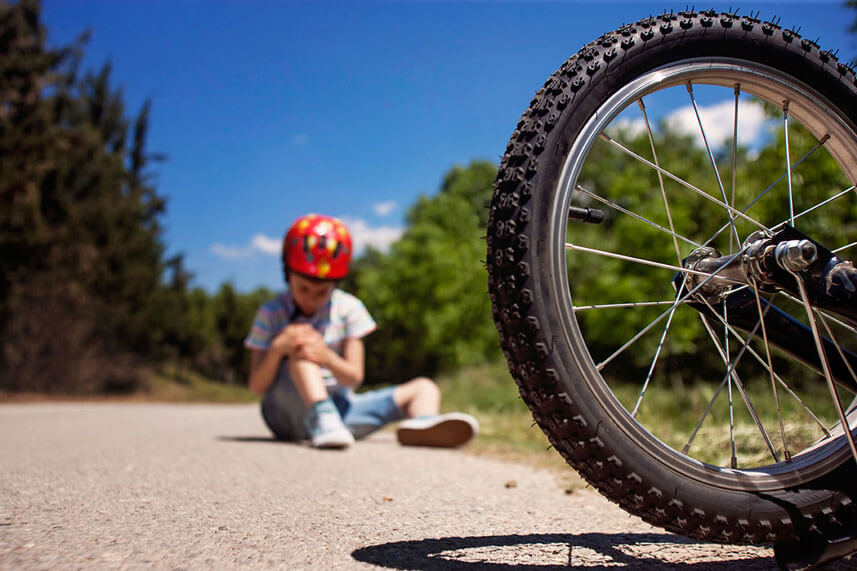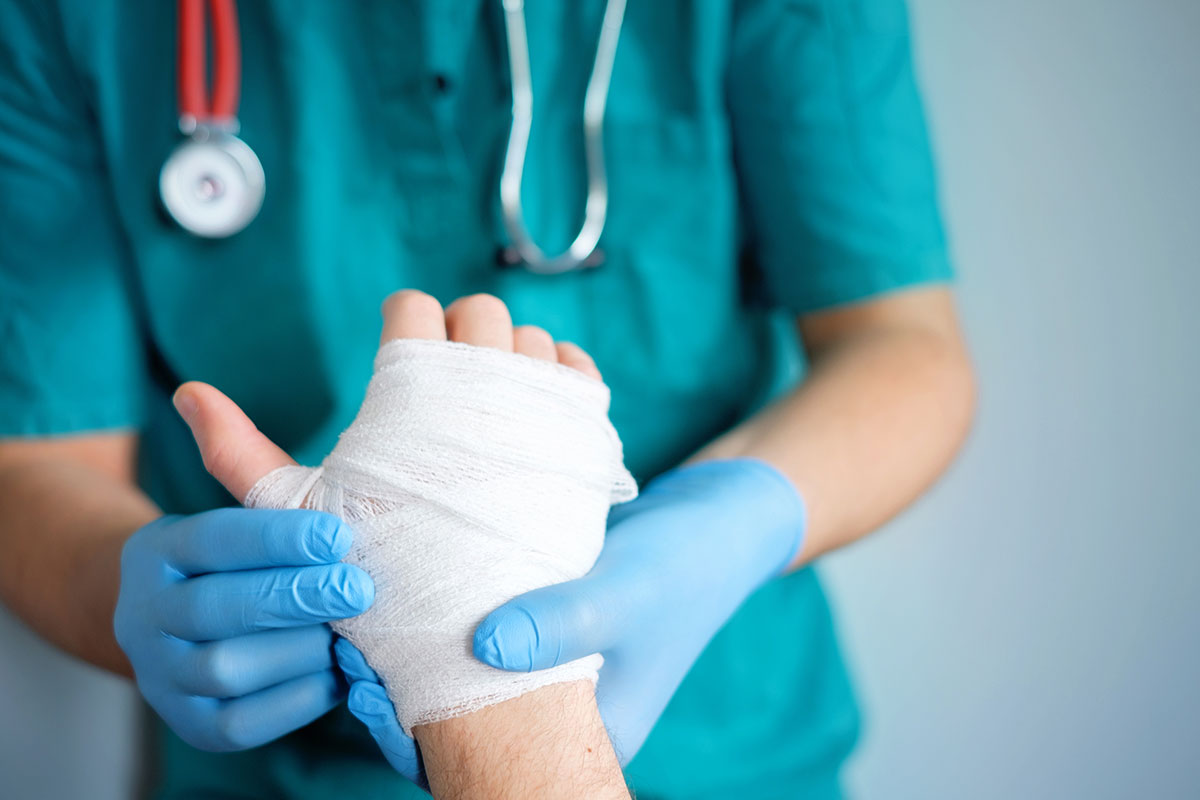What is an abrasion?
Typical abrasions include stubbed toes, carpet burns, and scraped knees and elbows. Most abrasions cause little damage or bleeding and require minor treatment.
Abrasion treatment at home
Abrasion treatment includes removing loose jewelry, such as rings, cleaning the area, applying a topical ointment, and bandaging. Consult FastMed for treatment of deep or infected abrasions, or those that don’t heal quickly.

How to treat a cut or wound
Minor wounds & cuts
Ever wondered how to treat a cut or wound? First aid for cuts depends on how deep the wound is. Minor cuts and wounds require little treatment other than proper cleaning, disinfection, and bandaging. Deeper wounds and cuts need additional treatment. In either case, make sure you remove any loose jewelry before the area swells.
To avoid tetanus, a DTaP is recommended for children ages 2 months to 11 years. Tdaps are recommended between age 11 and 18. Adults who haven’t had a tetanus shot within the past 10 years should visit FastMed for a booster.
If the wound shows signs of infection, visit your nearest FastMed as soon as possible for treatment.
How to heal deeper cuts & wounds
For proper healing, deeper cuts and wounds require medical attention and possibly stitches. If a cut or wound can’t be held together with a bandage or becomes infected, seek treatment at your local FastMed, and always remove any loose jewelry, especially rings, before the area swells.
How to treat an infected cut or scrape
If a cut, scrape, or deep wound becomes infected, visit FastMed for treatment.
Signs of infection include:
- Pain
- Warmth
- Redness
- Swelling
- A noticeable discharge
Important: Tetanus, or lockjaw, is a serious infection. If you haven’t received a tetanus shot within 10 years, visit a FastMed.
Signs of tetanus:
- Jaw and/or body spasms
- Neck stiffness
- Difficulty swallowing
- Fever
- Elevated blood pressure
- Rapid heartbeat
How to treat a cut or abrasion
Most minor cuts and scrapes can be treated at home.
- Remove any loose jewelry, especially rings, before the area swells
- Wash hands
- Apply light pressure using a clean cloth or gauze to stop bleeding
- Rinse under water & gently scrub using mild soap
- Apply a topical antibiotic & bandage
Visit FastMed for especially dirty wounds, or if you suspect an infection.
How to clean a wound or cut
Thoroughly cleaning the wound or cut prevents infection. Do not use hydrogen peroxide or strong solutions that may irritate the wound. Wash hands well, then gently cleanse the wound under cool, running water.
Antibiotics & ointments for cuts
Apply an antibiotic ointment to the cut. Discontinue use if you notice a rash.
Burns
Common household injuries like minor burns can be treated at home with a simple burn cream. Second-degree or more significant burns require care at FastMed or from another licensed medical professional. Learn what to put on a burn.
Avoid home remedies such as butter and other household products that may actually worsen, rather than remedy, a burn.
Third or fourth-degree burns require immediate emergency medical attention. Call 911.
Types of burns
Most burns fall into three categories:
- First-degree : Expect mild redness, swelling, pain, and peeling of the skin, but no blistering. Most sunburns fall into this category. First-degree burns can usually be safely treated at home with topical burn creams, if you’re up to date on your tetanus booster. Visit FastMed for larger burn areas, if a booster is required, or if you’re unable to treat the burn yourself. See treatment for first-degree burns.
- Second-degree burns: Expect some blistering and thickening of the skin. Proper cleaning, bandaging, and follow-up care are necessary. Consult FastMed or see treatment for second-degree burns.
- Third-degree burns: These cause widespread skin thickening and may appear white and leathery. Blisters may not fully develop. Seek immediate medical attention.
- Fourth-degree: These burns damage not only the skin, but also the nerves, tendons, and bones underneath. Call 911 immediately.
How to care for burns
Wondering what to put on a burn or what helps burns heal? How to care for burns depends on many factors. Treatment for chemical and electrical burns should always include a medical professional. These types of burns can produce internal damage with no external signs.
Otherwise, remedies for burns depend on severity.

First aid for first-degree burns
Soak in cool water for five minutes and use loose gauze to cover. You can also put antibiotic ointments and anesthetic creams on these burns. Do not use ice or cotton balls in the treatment of burns. These can do further damage. Also, do not use home remedies such as butter. These can worsen the effects of a burn.
If a first-degree burn doesn’t heal or shows signs of infection, visit FastMed.
What to do for second-degree burns
Deeper second-degree burns cause blistering. These burns take longer to heal and can be delicate. Keep the area covered and clean to prevent infection, and visit FastMed for treatment.
For immediate care, see treatment for first-degree burns. If the burn covers a wide or sensitive area, visit FastMed. Once the burn has healed, use sunscreen to protect the delicate new skin. This will lessen the scar and reduce your risk of developing malignant changes.
Treatment of third-degree burns
Third-degree burn victims may feel no pain due to nerve damage, but these burns are extremely serious. Always consult a medical professional to assure proper healing of the burn.
Call 911 and keep the burn area raised above the heart. Make sure no clothing is stuck to the skin.
How to cure burns
The best cure for burns is prevention. Always be careful when near a heat source, and while working with chemicals or using electricity.
* The content presented on this page is not intended to diagnose health problems or take the place of professional medical care.